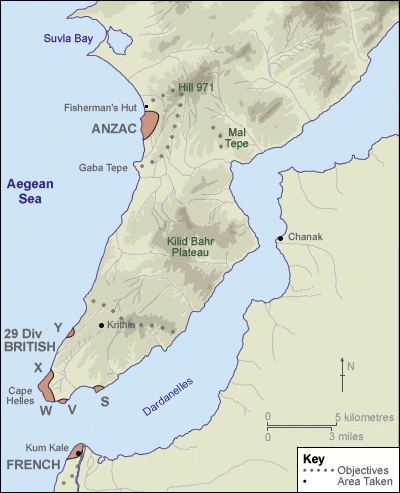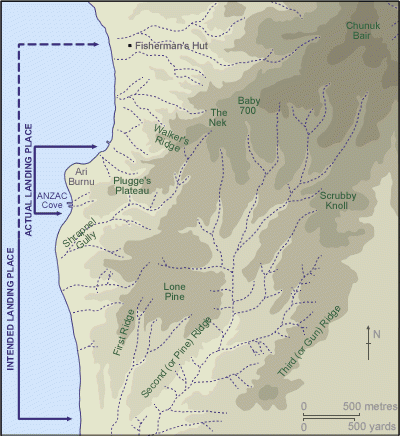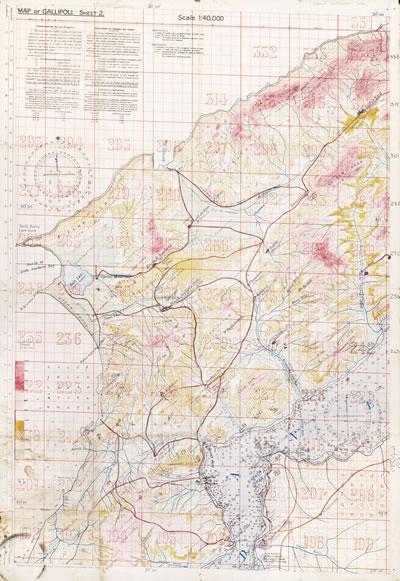Dawn of the Legend: The failed plan
The Gallipoli campaign was intended to force Germany's ally, Turkey, out of the war. It began as a naval campaign, with British battleships sent to attack Constantinople (now Istanbul). This failed when the warships were unable to force a way through the straits known as the Dardanelles. A third of the battleships were sunk or disabled on a single day, 18 March 1915.

A fresh plan was devised: the army under Sir Ian Hamilton would occupy the Gallipoli peninsula. This would eliminate the Turkish land and shore defences and open up the Dardanelles for the passage of the navy. It would involve British troops first capturing the tip of the peninsula on 25 April, then advancing northwards. Meanwhile the Anzacs would land on the western coast north of Gaba Tepe, at a narrow point on the peninsula.

The British and Anzac forces only succeeded in getting a toe-hold on the peninsula. Over the next eight months little progress was made, and the Anzacs were evacuated in December. By January 1916 the last British troops were withdrawn, and the venture abandoned.


Map used at the landing
The maps available to the commanders for the landing on 25 April 1915 were barely adequate. This one was carried by Colonel Henry MacLaurin, who commanded the 1st Australian Brigade, and it bears his annotations. MacLaurin was an early casualty, killed by a sniper two days later. RC02689
Are the High Gods bringing our new Iliad to grief? At whose door will history leave the blame for the helpless, hopeless fix we are left in?
General Sir Ian Hamilton
- The dawn of the legend
- 'Worthy sons of the Empire'
- The failed plan
- Ian Hamilton
- William Bridges
- Ewen Sinclair–MacLagan
- 25 April 1915 –The landing
- 25 April 1915 – Battle for the beaches
- 25 April 1915 – Battle for the ridges
- 25 April 1915 – The casualties debacle
- 25 April 1915 – A hard and bloody day
- Eight months at Anzac
- 25 April 1915 – The British landings
- 25 April 1915 – Australian submarine AE2
- The landing boat
- The legend
- The Turkish legend
- Roll of honour
- The Anzac spirit
- Battles for the imagination